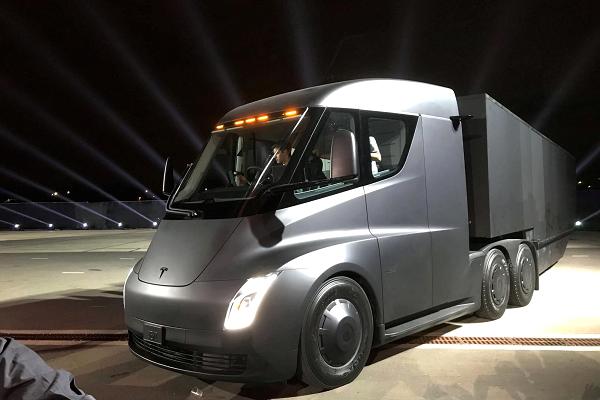The Tesla semi-truck has been a long-awaited reveal in not only the tech world but in the auto and shipping industry as well, and it is finally here.
With its sleek, almost spaceship-like design, the Tesla semi looked like Musk had just driven it from the future when he pulled it into the hangar where he unveiled it to the public for the first time.

In a TED talk, Musk said that the Tesla Semi’s performance was top-notch, and that it could pull a diesel semi “uphill” in a truck pull. At the official unveiling of the semi-truck, he’s revealed some performance stats to back up his claims.
In the Tesla semi reveal, Musk said the semi (with or without a trailer) will reach 60mph in 5 seconds. Now, fully loaded, at the max gross weight allowed on a U.S. highway (80,000 lbs.), the truck, “[will reach] 60mph in 20 seconds.” The diesel semi didn’t even compare in acceleration.
With the same load, the Tesla semi can 65mph on a 5% grade compared to the 45mph a diesel semi can reach.
The truck has a 500-mile range, “at maximum weight, at highway speed.”
Musk said they designed the truck to be like a bullet. In comparison, typical diesel semi-trucks have a drag coefficient between 0.65 and 0.70 while the Tesla semi has a drag coefficient lower than that of the Bugatti Chiron (0.38), two-million dollar sports car. The drag coefficient of the Tesla semi comes in at 0.36.
Musk guaranteed that every Tesla will have enhanced autopilot as a standard. This includes automatic braking, automatic lane keeping, and forward collision detection.
In an emergency, Musk said, “the truck will stay in lane, and gradually come to a halt, put on the emergencies [lights]. If it doesn’t hear a response from you it will actually call emergency services and get an ambulance.”
According to Musk, a trucker’s worst nightmare, jackknifing, is gone with the Tesla semi-truck. The Tesla’s four independent motors will dynamically adjust to eliminate the possibility of jackknifing.
Tesla places a lot of confidence behind their new creation, so much so that they guarantee 1,000,000 miles without breaking down.
Tesla is accepting orders for the truck, and production is set for 2019.
For more performance stats on the Tesla semi-truck, here is a link for the unveiling.

